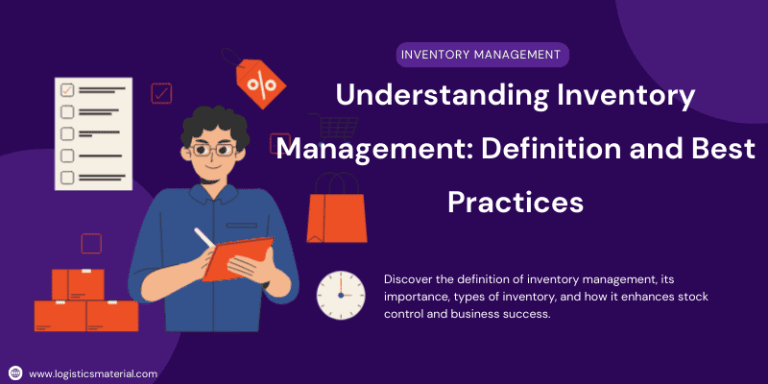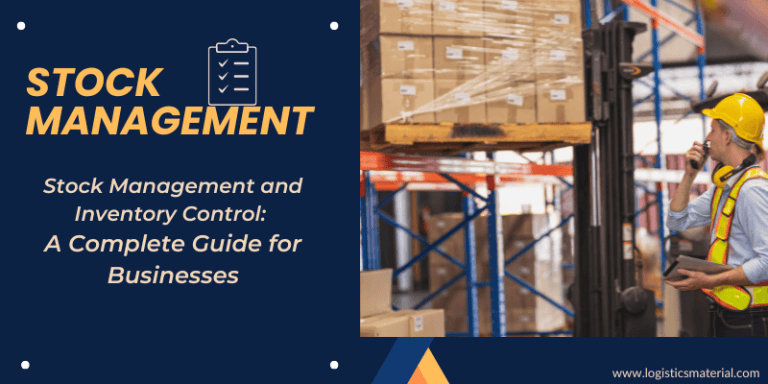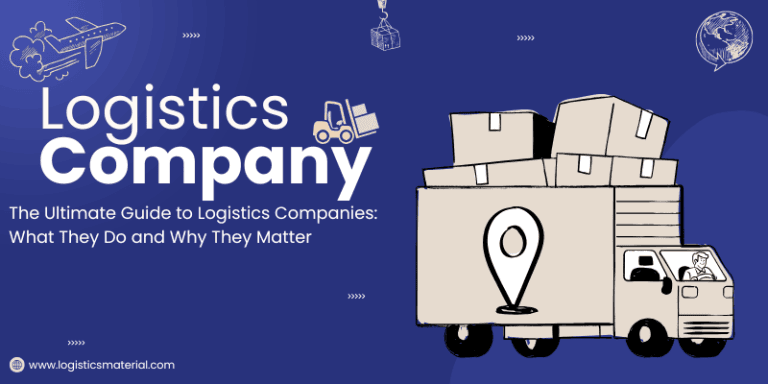Related Articles
In today’s progressively competitive commerce scene, successful supply chain administration is vital for victory. The significance of SCA cannot be exaggerated, because it envelops the whole preparation of arranging, sourcing, creating, and conveying items to clients.
One of the main reasons supply chain management is so important is its direct influence on customer satisfaction. Customers want timely delivery, precisely scheduled fulfillment, and premium products.
A well-managed supply chain guarantees that these desires are met reliably, driving to fulfilled clients who are more likely to end up rehash buyers and advocates for your brand.
Supply chain administration is also noteworthy in fetching diminishment and productivity enhancement. Businesses can take a toll on investment funds and operational excellence by streamlining forms, optimizing stock levels, and minimizing squandering. Also, compelling SCA permits companies to reply rapidly to advertise changes and client requests, remaining ahead of the competition.
Another basic viewpoint of SCA is hazard moderation. Worldwide supply chains are vulnerable to different dangers, such as common calamities, political precariousness, and financial changes. By executing strong hazard administration techniques, businesses can minimize the effects of these disturbances and guarantee the coherence of operations.
Additionally, supply chain administration advances collaboration and cooperative energy among diverse partners, producers, merchants, and retailers. By setting up solid connections and communication channels, businesses can cultivate development, share information, and drive collective development.
These five logistics strategies and techniques may be used to cut expenses and increase supply chain efficiency
1) Just-in-time (JIT) supply management and lean fabrication
One of the best methodologies that each supply chain administration proficient ought to know is lean fabricating and just-in-time (JIT) stock administration.
This methodology centers on minimizing squandering and maximizing proficiency within the production preparation. In incline fabricating, the objective is to dispense with any exercises or forms that don’t include esteem to the ultimate item.
This requires a cautious investigation of the whole generation cycle to recognize and eliminate any superfluous steps or assets. By streamlining the production process, companies can diminish costs, progress efficiency, and convey items to clients more rapidly.
Just-in-time stock administration, on the other hand, emphasizes having the proper sum of stock at the correct time. Instead of stockpiling over-the-top stock, which can tie up capital and increment carrying costs, JIT points to having stock conveyed fair when it is required for generation or client orders.
This approach decreases the chance of overabundance of stock getting to be out of date or harmed and permits companies to be more responsive to changes in client requests.
Executing incline fabricating and JIT stock administration requires an exhaustive understanding of the supply chain, near collaboration with providers, and viable communication throughout the organization.
Ensuring timely inventory replenishment necessitates meticulous planning and forecasting. Supply chain experts may significantly increase customer happiness, cost savings, and efficiency by implementing this method.
It’s crucial to remember, though, that putting lean manufacturing and just-in-time (JIT) inventory management into practice might call for adjustments to procedures, mindsets, and cultures. In the long term, the advantages of completely integrating these tactics into the supply chain may outweigh the time and effort required.
2) Viable request estimating and inventory optimization
Viable request determining and inventory optimization in supply chain management, one of the foremost pivotal techniques to ace is viable request determining and stock optimization. By precisely anticipating client requests and guaranteeing ideal stock levels, businesses can minimize costs, avoid stock outs, and maximize client fulfillment.
Request estimating includes utilizing chronicled information, advertising patterns, and client bits of knowledge to anticipate future requests for items. This data makes a difference businesses arrange generation, obtainment, and conveyance exercises more successfully.
By precisely estimating requests, companies can dodge overloading or understocking items, reducing excess stock costs or misplaced deal openings. To realize compelling request determining, businesses can use progressed estimating procedures, such as factual modeling, time arrangement examination, and showcase investigation.
These strategies give profitable bits of knowledge into seasonality, patterns, and client behaviors, empowering organizations to expect request variances and alter their procedures appropriately.
Once the request is forecasted, stock optimization comes into play. This includes deciding the ideal amount and area of stock to meet client requests while minimizing carrying costs.
By deliberately setting stock in the proper areas, businesses can diminish transportation costs and move forward to arrange fulfillment speed. Stock optimization moreover includes executing stock administration procedures, such as just-in-time (JIT) stock, vendor-managed stock (VMI), and dispatch stock.
These approaches offer assistance to businesses in streamlining their supply chains, diminishing lead times, and making strides by and large in operational productivity.
Besides, grasping innovation solutions like request arranging programs, stockroom administration frameworks, and robotized stock control frameworks can altogether improve the accuracy and effectiveness of request forecasting and stock optimization forms.
These apparatuses give real-time data, analytics, and computerization capabilities, engaging supply chain experts to make data-driven choices and proactively react to showcase flow.
In outline, viable request estimating and stock optimization are basic components of effective supply chain administration. By leveraging progressed procedures, embracing technology arrangements, and persistently progressing these strategies, experts can ensure a streamlined and responsive supply chain, eventually driving commerce development and client fulfillment.
3) Effective design of the distribution and transit networks
Effective transportation and division network projects are pivotal aspects of force chain operation that every professional should know.
This program focuses on optimizing the motion of goods from the point of origin to the end client in the most cost-effective and timely manner. One of the crucial considerations in intending an effective transportation and division network is opting for the right modes of transportation.
Professionals must dissect procurators similar to the type of product, its fragility, cargo, and measure, as well as the distance it needs to travel.
For illustration, if the product is perishable, air transportation might be the stylish option to ensure quick quittance. But if the product is big and non-perishable, ocean transportation might be more cost-operative.
Once the modes of transportation are concluded, professionals must determine the most optimal rows and division centers. This requires assaying colorful procurators similar to the propinquity of division centers to suppliers and guests, business conditions, and transportation charges.
By strategically locating division centers, professionals can minimize transportation time and charges, icing timely quittance to guests while maximizing effectiveness.
Enforcing technology results is another important aspect of effective transportation and division network projects. Exercising transportation operation systems and path optimization software can support professionals in streamlining missions, tracking shipments in real time, and making data-driven opinions.
These technologies give visibility into the force chain, allowing professionals to identify backups and make necessary adaptations to ameliorate effectiveness.
Collaboration and hookups are also vital in creating an effective transportation and division network.
Professionals should nurture strong connections with transportation providers, brokers, warehousing installations, and other stakeholders. By working out together, they can work each other’s moxie and coffers, leading to further streamlined missions and better client indulgence.
Nonstop monitoring and dissection of crucial interpretation pointers (KPIs) play a pivotal part in optimizing transportation and division networks.
By regularly assessing criteria similar to conveyance time, quittance delicacy, and transportation charges, professionals can identify areas for enhancement and apply necessary adaptations. This data-driven path enables professionals to make informed opinions that enhance effectiveness and reduce charges.
Effective transportation and division network projects are an overcritical element of prosperous force chain operation. By learning this program, professionals can ensure flawless motion of goods, reduce charges, and give unusual client indulgence.
4) Collaboration and partnership with suppliers and customers
Working closely with suppliers
and customers to accomplish shared objectives, boost productivity, spur
innovation, and provide consumers with improved value is what is meant by
collaboration.
One of the crucial advantages of collaboration and cooperation
with suppliers is the capability to optimize the force chain. By participating
information, perceptivity, and vatic nations, companies can align their product
and procurement processes more effectively.
This collaboration can conduct to bettered force operation,
downgraded lead moments, and dropped charges. Also, it allows for a better
understanding of supplier capabilities, furthering invention and nonstop
enhancement.
Companies can also maximize the advantages of collaboration by
involving suppliers beforehand in the product evolution process. Supplier input
on projects, accouterments, and manufacturing processes can conduct to further
cost- operative and ingenious productions.
Involving suppliers as crucial stakeholders can also ameliorate
the celerity and effectiveness of new product prolusions, icing the flawless
integration of new immolations into the request.
Moreover, collaboration with suppliers can help alleviate
pitfalls associated with force chain dislocations. By developing strong
connections, companies can establish contingency plans, indispensable sourcing
options, and complementary brace during unlooked-for events similar as natural
disasters or profitable oscillations. This visionary path reduces the
susceptibility of the force chain and enhances common business adaptability.
Working together with consumers may also assist uncover new
trends and offer insightful information about the industry. Businesses may
obtain information on shifting consumer behavior, tastes, and purchasing
patterns by collaborating closely with important clients. By using this data to
support market segmentation, product positioning, and strategic
decision-making, businesses may outperform rivals and seize new possibilities.
Furthermore, co-creation and product innovation may be fostered
through cooperation and collaboration with customers. Through focus groups,
surveys, or beta testing programs, corporations may include customers in the
product development process and produce goods that are specifically tailored to
meet their demands. Increased client loyalty, improved company reputation, and
the creation of revolutionary innovations are all possible outcomes of this
cooperative strategy.
Establishing open communication lines with suppliers and
consumers is essential for organizations to successfully implement a
cooperation and partnership strategy. Clear and honest communication guarantees
easy information flow and promotes mutual understanding and trust. Establishing
and maintaining connections is facilitated by conducting collaborative
performance evaluations, sharing dashboards, and holding regular meetings to
monitor progress.
To promote cooperation, firms should also invest in the
appropriate digital solutions. Across the supply chain, effective data
exchange, real-time visibility, and seamless coordination are made possible by
tools like supplier portals, CRMs, and integrated planning platforms. These
technologies facilitate decision-making more quickly, improve teamwork, and
expedite procedures.
Overall, firms need to collaborate and form partnerships with
suppliers and consumers to attain sustainable development, a competitive edge,
and satisfied customers. Companies that collaborate closely may improve their
supply chain, spur innovation, and build enduring bonds that are advantageous
to all parties.
5) Embracing technology and data analytics
Embracing technology and data analytics in the force chain has
come a strategic imperative for associations seeking to optimize their
missions, enhance effectiveness, and gain a competitive bite in the moment’s
dynamic and data-driven business terrain.
By employing the authority of technological creations and data-driven
perceptivity, companies can transfigure their force progressions into nimble
and flexible ecosystems capable of conforming to dislocations, enhancing
functional effectiveness, and furthering client satisfaction and success the logistics machine.
Technology plays a vital part in enhancing force chain visibility and
traceability. The Internet of Effects (IOT), detectors, and radio frequency
identification (RFID) markers give real-time visibility into the position,
condition, and motion of goods and accouterments throughout their trip, from
origin to destination. This grainy data empowers companies to identify implicit
detainments, help losses, and optimize quittance rows, eventually reducing
charges and perfecting client satisfaction.
With the use of artificial intelligence (AI) and machine learning, data
analytics makes it possible to accurately estimate demand, enabling companies
to stock the appropriate items at the appropriate time and location.
AI systems can more accurately forecast future demand patterns by examining past sales data, industry trends, and outside variables. This lowers the danger of stockouts, overstocking, and needless expenses by enabling businesses to manage inventory levels, modify production schedules, and proactively handle possible supply shortages or surpluses.
Data analytics platforms give companies a centralized hub for collecting,
assaying, and imaging force chain data.
Companies can gain a holistic prospect of their force chain missions by integrating data from colorful sources, involving detectors, transportation systems, and client relations.
This complete data geography enables companies to identify trends, patterns,
and aberrations, empowering them to make informed opinions and optimize interpretation across the force chain.
Embracing technology and data analytics isn’t precisely about espousing new
tools it’s around transubstantiating the expressway companies supposed around
and taking their force progressions, creating data-driven cultivation that fosters nonstop enhancement and invention.
By employing the authority of technology and data analytics, associations can
achieve a competitive bite, optimize their force progressions, and deliver
unusual value to their guests.
Conclusion
We hope you set up our blog post on learning force chain operation and the top 5 logistics strategies perceptive and instructional.
Supply chain operation is an overcritical aspect of any business, and gathering these crucial strategies can support professionals in optimizing their missions and punch excrescency.
By enforcing these tactics, you will be better seasoned to streamline processes, reduce charges, and enhance client satisfaction.
Flashback, supply chain operation is a nonstop literacy process, consequently, stay inquisitive and open to new approaches, we hope our blog post has handed you precious insights.
We appreciate your interpretation and hope you have a great time studying supply chain and logistics operations!









